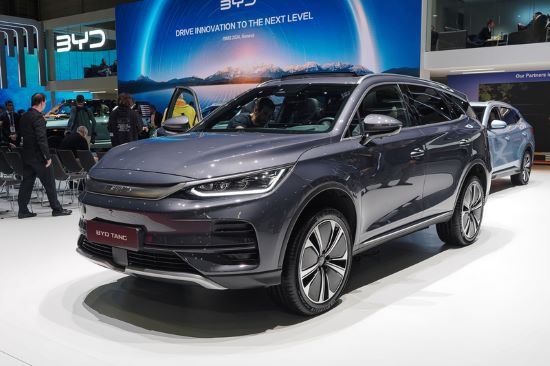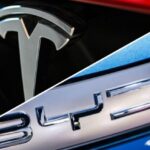
The electric vehicle (EV) has been seen as a panacea in our global fight to move away from fossil fuel energy use in transportation. Tesla, the company that revived EVs after General Motors killed their foray into the market from 1996 to 1999, has successfully established electric-powered transportation for the masses.
Where I live in Oakville, Ontario, a Ford Motor Company town, Tesla EVs can be seen in driveways and the parking lots of condominiums. In my building, I have counted at least a dozen along with rival company EVs. Our building has public charge ports in our retail parking space as well as dedicated EV parking that costs tenants a premium. A few blocks away there is EV charge on-street parking, and plazas nearby have parking spaces that feature charge ports. So the EV revolution is very much in full swing in my neck of the woods.
Before proceeding I must confess that I don’t drive an EV. I drive a hybrid gas-and-electric powered vehicle. I may consider an EV in the future but the lack of significant public and private charging infrastructure and sticker price have kept me away. The EVs that I can choose from are made in North America, Korea, Japan and Europe. They come with sticker shock when compared to many gasoline and diesel-powered models.
Enter China, the most significant producer of EVs today. Whether this is because of the country’s manufacturing heft and scale, or because it has cornered the battery market, Chinese companies are challenging EV manufacturers from elsewhere and are producing vehicles that cost far less while offering advanced features.
The defensive response by North America has involved placing a high blocking tariff on lower-priced Chinese EVs. The only exception in the U.S. appears to be made-in-China Teslas that come in without a 100% tariff surcharge. In Canada, Teslas manufactured in China are being treated the same as all other Chinese-made EVs. The European Union (EU) has also imposed blocking tariffs of between 17.4% to 37.6%, along with a 10% duty on all Chinese EV imports. In Europe, Teslas manufactured in China that faced a 20.8% blocking tariff saw it reduced to 9% in the last month.
Restricting Chinese EVs with Implications for Climate Change
In defence of the goal to reduce humanity’s carbon footprint to mitigate climate change, the move to restrict cheaper EVs from being made available to the masses seems outrageous. The International Energy Agency (IEA) in its Global EV Outlook notes that emissions avoided by using EVs rather than internal combustion engine transportation would reduce carbon dioxide (CO2) emissions or their equivalent by over 2 Gigatons by 2035. That reduction would come with multiple benefits: lessening the rise in global atmospheric temperatures and sea levels, improving air quality, and the health of us and all life on the planet.
EVs are environmental and climate change difference-makers. They produce 50% lower emissions from materials, build and operational requirements. When charged using renewable sources their emission contributions fall even further. So why not encourage the adoption of EVs with cheaper ones made in China to speed up the energy transition from fossil fuels to electricity? What is the concern? Is it about quality, is it xenophobia, or is this a pure made-in-America, Canada, or Europe support policy?
One thing is abundantly clear. China’s EV market is rolling into high gear. In its first four months in 2024, BYD, China’s premier EV builder sold more than 434,000 cars. It now outproduces and outsells Tesla both in the Chinese market and globally.
Why this is happening is simple: BYD is producing quality products with starting pricing for four EV models between US $26,250 and $33,154. Compare the pricing to entry-level Tesla Model 3s that cost US $40,630 and with options $54,630. Compare pricing to Tesla’s Model Y which starts at US $43,900, the S at $76,630 or the X at $81,630.
BYD isn’t alone. China will likely still see 7 EV manufacturers of note in the market by this year’s end. One of these is Xpeng which just launched an entry-level EV with advanced self-driving features. Called the Mona M03, its starting US price is $21,700. An hour after its launch Xpeng had already received more than 10,000 orders. None of the orders came from European or North American buyers.
Decarbonizing EV Rebate Strategies
With a desire to decarbonize transportation, when EVs first arrived, governments in the Global North offered rebates to encourage consumers to switch from gas and diesel-powered transportation. Policies in the US and Canada at the federal level have included rebates for purchasers and leasing of select model EVs. The US offer in 2024 is $7,500. In Canada, it is CDN $5,000 (approximately US $3,700).
American states and Canadian provinces are also in the rebate game. For example, California provides an additional rebate over the federal one amounting to US $3,000 or more depending on the vehicle model. British Columbia offers EV purchases CDN $4,000 over the federal $5,000.
No Chinese models are eligible. Even after applying the rebates, however, Chinese EVs are still cheaper.
China’s Advantage
Why are Chinese EVs cheaper? A recent article in the L.A. Times reports that Chinese government subsidies provided the initial support for companies that were already producing and supplying lithium-ion batteries to world markets. China had access to the critical mineral resources needed to make these batteries. It was able to lower battery production costs representing about one-third of an EV’s total manufactured cost.
The result states the L.A. Times article is a country that has become a battery-making behemoth with almost every EV today incorporating a made-in-China battery. This is making North American and European car makers uncompetitive.
Hence blocking tariffs have been instituted to save domestic manufacturers from abandoning the EV market. Some are already cutting back on plans. GM, Ford and Stellantis have all delayed new EV model production using the excuse of a drop in consumer demand reflected in declining existing model sales.
The truth, however, is much more about having arrived in the EV market late except for Tesla, and of having not built a manufacturing infrastructure and supply chain covering the full range from material sourcing to production. North America and Europe learned to rely on rare earths, cobalt, lithium and other strategic minerals sourced on the cheap from non-native sources. China has benefited.
Keeping Chinese EVs off North American and European roads will not help to decarbonize global transportation in our efforts to mitigate climate change. Instead, it will temporarily allow a few North American and European manufacturers to shelter behind government shields to retain their businesses and profits while the world continues to heat up.








